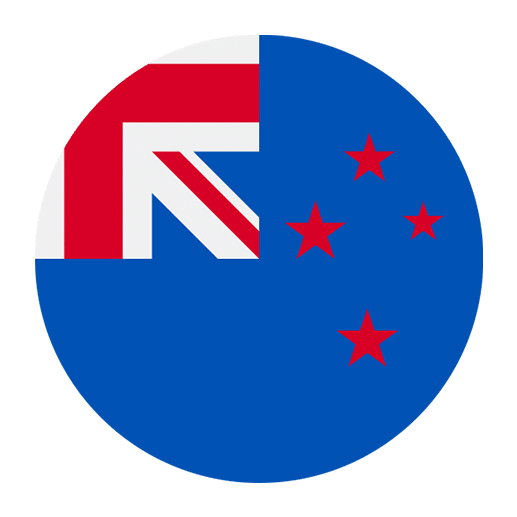Navigating the intricacies of a new language can be both a thrilling and challenging experience. One of the fundamental aspects of language learning is understanding pronouns—those small but mighty words that replace nouns and help us avoid redundancy. If you’re diving into the Māori language, commonly spoken in New Zealand, getting a handle on pronouns is an essential step towards fluency and cultural understanding. This guide aims to simplify Māori pronouns for English speakers, offering clear explanations and practical examples to enhance your learning journey.
Understanding Pronouns in Māori
Pronouns in Māori operate differently from those in English, reflecting unique cultural and grammatical nuances. While English has a relatively straightforward pronoun system with distinctions based primarily on number and gender (e.g., I, you, he, she, they), Māori pronouns convey additional layers of meaning, including inclusivity and exclusivity, as well as singular, dual, and plural forms.
Personal Pronouns
In Māori, personal pronouns are categorized into three groups based on number: singular, dual, and plural. Additionally, Māori pronouns can be inclusive or exclusive, especially in the first-person plural forms. Here’s a breakdown:
Singular Pronouns:
– Ahau or Au – I, me
– Koe – You
– Ia – He, she, him, her
Dual Pronouns:
– Tāua – We (you and I) [inclusive]
– Māua – We (he/she and I) [exclusive]
– Kōrua – You two
– Rāua – They two
Plural Pronouns:
– Tātou – We (all of us including you) [inclusive]
– Mātou – We (all of us, excluding you) [exclusive]
– Koutou – You all
– Rātou – They (three or more)
Inclusive vs. Exclusive
One of the most distinctive features of Māori pronouns is the distinction between inclusive and exclusive forms. This distinction is important because it clarifies whether the speaker is including the listener in the group being referred to.
– Inclusive: Includes the person being spoken to. For example, Tāua (we two, you and I) and Tātou (we all, including you).
– Exclusive: Excludes the person being spoken to. For example, Māua (we two, excluding you) and Mātou (we all, excluding you).
Possessive Pronouns
Possessive pronouns in Māori indicate ownership and are divided into two categories: a and o categories. The a category generally denotes active possession or control, while the o category denotes passive possession or association. Here’s a simplified chart:
Singular Possessive Pronouns:
– Tāku, Tōku – My
– Tāu, Tōu – Your
– Tāna, Tōna – His, her
Dual Possessive Pronouns:
– Ā tāua, Ō tāua – Ours (yours and mine) [inclusive]
– Ā māua, Ō māua – Ours (his/her and mine) [exclusive]
– Ā kōrua, Ō kōrua – Yours (two people)
– Ā rāua, Ō rāua – Theirs (two people)
Plural Possessive Pronouns:
– Ā tātou, Ō tātou – Ours (all of us, including you) [inclusive]
– Ā mātou, Ō mātou – Ours (all of us, excluding you) [exclusive]
– Ā koutou, Ō koutou – Yours (three or more people)
– Ā rātou, Ō rātou – Theirs (three or more people)
Practical Examples
To help solidify your understanding of Māori pronouns, let’s look at some practical examples:
1. Singular Pronouns:
– Ahau e haere ana ki te toa. (I am going to the store.)
– Kei te pehea koe? (How are you?)
– Kei te kura ia. (He/She is at school.)
2. Dual Pronouns:
– Tāua e kai ana. (We [you and I] are eating.)
– Kei te mahi māua. (We [he/she and I] are working.)
– Kei te haere kōrua? (Are you two going?)
– Kei te moe rāua. (They [two] are sleeping.)
3. Plural Pronouns:
– Kei te tākaro tātou. (We [all of us, including you] are playing.)
– Kei te ako mātou. (We [all of us, excluding you] are learning.)
– Kei te karakia koutou. (You all are praying.)
– Kei te waiata rātou. (They [three or more] are singing.)
4. Possessive Pronouns:
– Ko tāku pukapuka tēnei. (This is my book.)
– Kei hea tōu waka? (Where is your car?)
– Kei te kura tāna tamaiti. (His/Her child is at school.)
– Kei te kāinga ā tātou mokopuna. (Our [all of us, including you] grandchildren are at home.)
Common Challenges and Tips
Learning Māori pronouns can be challenging due to their complexity and cultural specificity. Here are some common challenges and tips to overcome them:
1. Inclusivity and Exclusivity:
– Challenge: Remembering when to use inclusive versus exclusive pronouns.
– Tip: Practice by creating scenarios or dialogues that require you to specify whether the listener is included or excluded.
2. Dual Forms:
– Challenge: Using dual forms correctly, especially if your native language doesn’t distinguish between singular, dual, and plural.
– Tip: Pair up with a language partner and practice using dual pronouns in conversation. This will help reinforce their usage in a natural context.
3. Possessive Pronouns:
– Challenge: Distinguishing between a and o categories.
– Tip: Create a list of common nouns and classify them into a or o categories. Practice forming sentences with these nouns to become more comfortable with the distinctions.
4. Pronunciation:
– Challenge: Pronouncing Māori words correctly, especially the vowels and diphthongs.
– Tip: Listen to native speakers, either through online resources or language classes, and mimic their pronunciation. Pay special attention to vowel sounds and practice regularly.
Conclusion
Navigating Māori pronouns may seem daunting at first, but with practice and patience, you can master this essential aspect of the language. Understanding these pronouns not only enhances your linguistic skills but also deepens your appreciation for Māori culture and communication. Remember, language learning is a journey, and each step brings you closer to fluency and cultural connection. Keep practicing, stay curious, and enjoy the process of learning Māori. Kia kaha! (Be strong!)

